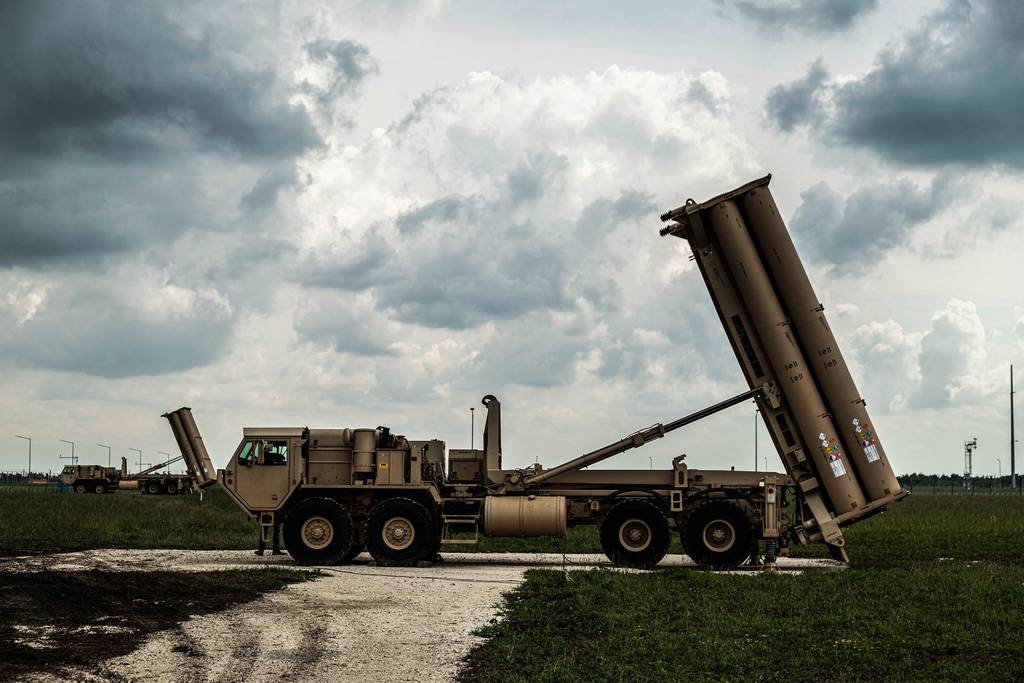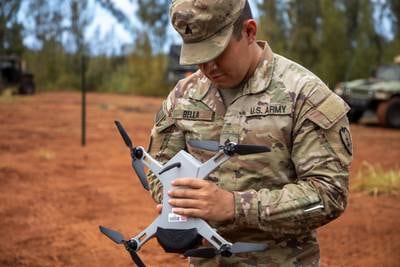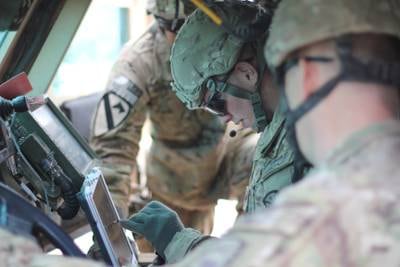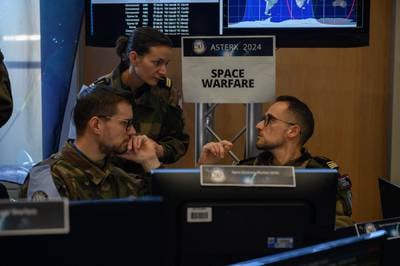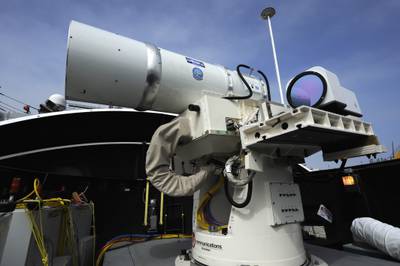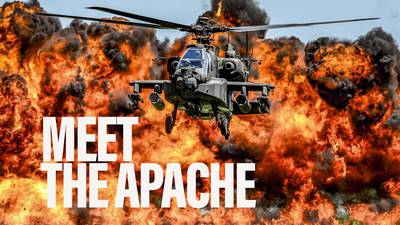HUNTSVILLE, Ala. — The new U.S. Missile Defense Agency director is opposed to the transfer of the Terminal High Altitude Area Defense System, or THAAD, to the Army — something Senate authorizers want to do this year in the fiscal 2020 authorization bill.
Talk of transferring THAAD to the Army has been ongoing for roughly a decade. The Army officially operates the system, but the MDA conducts its development and continued modernization.
Both MDA and Army leadership have said if Congress were to authorize a transfer, they would not oppose the move as long as the necessary funding is made available and not taken from other portfolios within the service.
RELATED
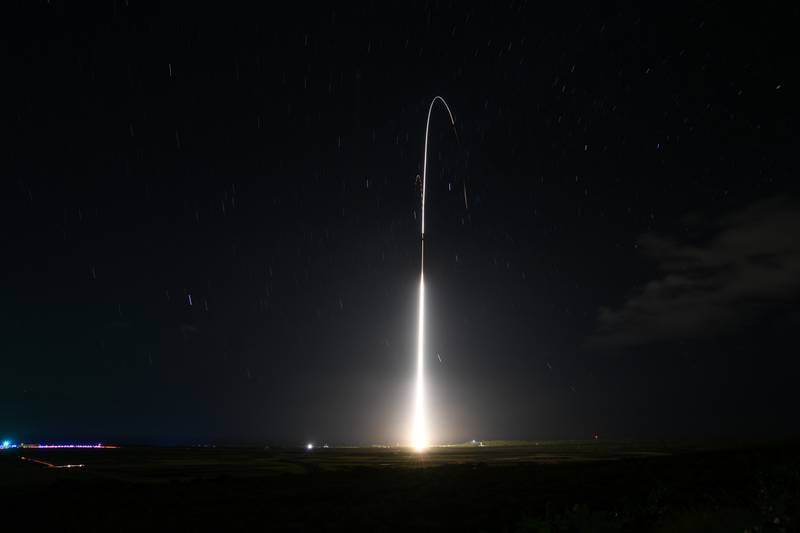
But there’s still a fear that programs transferred to the services is where they go to die, either in their entirety or at least the chance of continued system modernization. For instance, there could be a plan down the road to extend the range of the THAAD interceptor.
Historically, at times, when programs are transferred, funding meant to further improve systems has been cannibalized for more pressing, immediate needs within the armed services.
“Why would we hand that off to the Army or Air Force, that sort of transfer to a service where it won’t be prioritized? They have many other priorities,” MDA Director Vice Adm. Jon Hill told Defense News in an exclusive interview at the Space and Missile Defense Symposium in Huntsville, Alabama.
“I don’t like organizational experiments on programs that are delivering more fighting capability,” he added.
The challenge
Before Congress, the military or the MDA consider transferring such a capability, a better definition for “transfer of services” must be ironed out, Hill said. He considers defining this one of his top challenges.
“It gets suspicious when we don’t have a fully defined term because all it really results in is fracturing of a program during a time where it’s most critical to have those programs stable and taking care of the war fighter,” Hill said. “There’s been a lot of discussion about the THAAD and the SM-3 [missile] transfer to the services. What does that mean?”
The definition of transfer “ranges everything from a full-up transfer of the system over to the service, which assumes that the system is static and how it’s designed today is how it’s going to be designed forever,” Hill said.
If it means transferring operations and sustainment responsibility, and then “put that in the done pile. The Army invests heavily in the operations and sustainment of that. I don’t know what more we would want out of them,” he said.
The argument
MDA is examining whether it is doing enough to support the Army’s successful operation and sustainment of the system, he noted, such as whether the service has the right logistics line in place and the right training.
A THAAD transfer could also be disruptive to production at a time when THAAD interceptors are in high demand and orders continue to grow.
RELATED
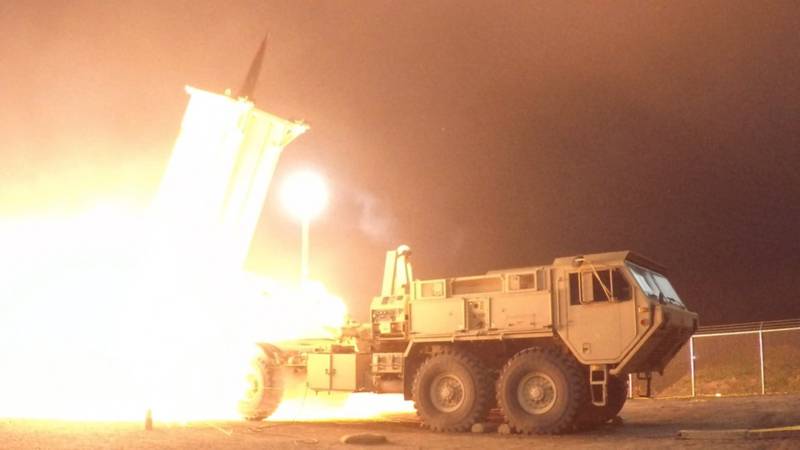
Even if the transfer of THAAD meant the service would responsible for interceptor procurement, the MDA would have to break contracts for the Army to take over, which could result in delayed production, according to Hill.
“We know right now, in today’s operational environment, we need more,” Hill said. “So that makes no sense to me.”
And for Hill, a THAAD transfer is a slippery slope. If the Army took complete control of the batteries, “then there’s this discussion, ‘Well, let’s include the TPY/2 radar and let’s walk it a little bit further and let’s take the homeland defense radars that are deployed globally that have a totally different mission.”
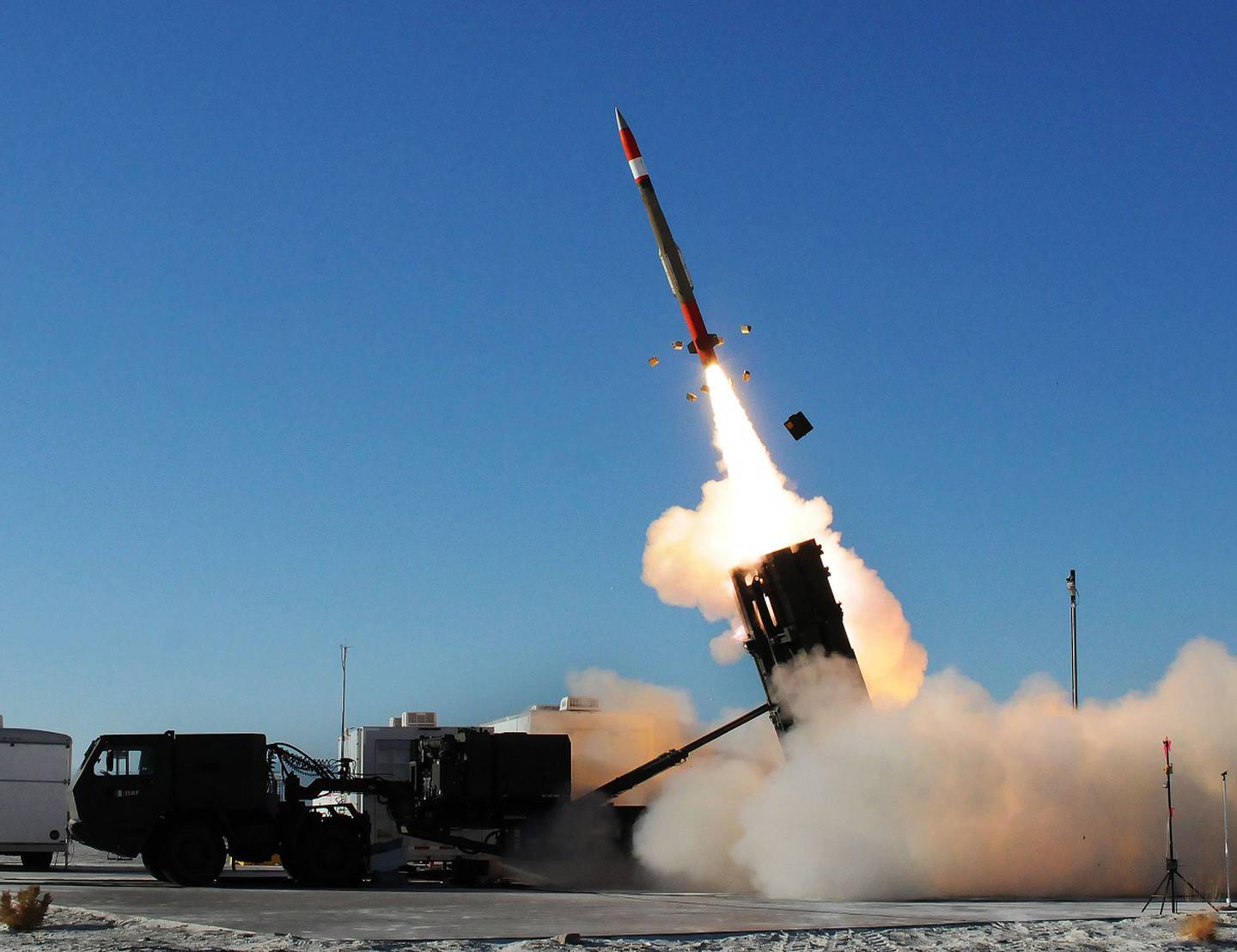
The resistance to transfer THAAD in its entirety is not a sign of a resistance to transfer where it makes sense, Hill noted.
“I often hear that we don’t know how to transfer. Well look at the Aegis ships today. Navy procures those ships with ballistic missile defense capability. The Navy has come in and said: ‘Hey, we’re going to build a multimission radar to include BMD capability in a SPY-6 [radar],’ ” Hill said. “Man, what’s wrong with that? That’s fantastic.”
MDA has also fully transferred the Patriot air and missile defense system to the Army. “Where Patriot is different, is it’s a multimission system,” Hill said. “They have air defense as part of the maneuver force. It’s sort of like cruise missile defense on a ship. We don’t need to take over the Navy’s cruise missile defense. … Patriot is sort of the same thing.”
THAAD is part of a wider integrated missile defense system, he added.
“THAAD has to stay in MDA ... for the interoperability and integration into the other domains from across the services," Riki Ellison, chairman and founder of the Missile Defense Advocacy Alliance, told Defense News. "THAAD is not an Army-centric weapon system. It should never be deployed as a standoff, alone weapon system.”
The Joint Urgent Operational Need out of the Korean theater that calls for the integration of THAAD and Patriot is a prime example, Ellison noted. “MDA is the only one that has cross-domain [Command and Control, Battle Management and Communications] development and operational development as proven with the [Ground-Based Midcourse Defense] System," he said.
RELATED

Rebeccah Heinrichs, a senior fellow at the Hudson Institute, said: “I’m afraid the Army won’t fund THAAD if it’s their responsibility. We need to free up more money in MDA so it can focus on research and development, so we have a dilemma. Something has to give.”
Short of the defense secretary directing the services to fund and support systems like THAAD, Heinrichs said, “they’re probably just going to have to stay in MDA. That means we need a much bigger top line in MDA ... to fund the new technologies needed for advanced threats, especially.”
The agency is currently advising the Pentagon and Congress on the right plan for where THAAD should live.
“That’s something that we have to work internally," Hill noted, "and so we need to get our act together on both sides.”
Jen Judson is an award-winning journalist covering land warfare for Defense News. She has also worked for Politico and Inside Defense. She holds a Master of Science degree in journalism from Boston University and a Bachelor of Arts degree from Kenyon College.
